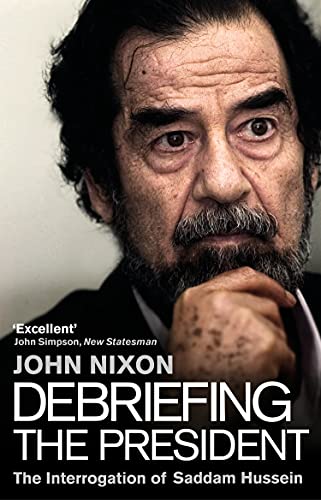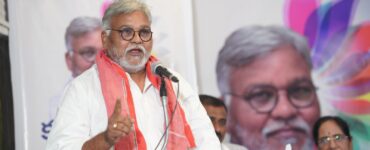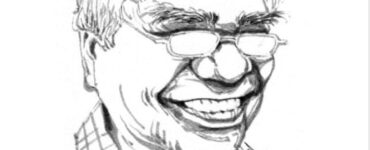“If only our government had spent the money designated for invading Iraq on finding cures for diseases or funding a health care system, may be America would be better off” says John Nixon the author of the book “Debriefing the President – The Interrogation of Saddam Hussein”. John Nixon is the first CIA officer to interrogate Saddam Hussein after he was captured by the Americans in December 2003. This book was released in the year 2016. The World has witnessed the after effects of Iraq-American war and also understood that the allegations regarding the nuclear weapons in Iraq made by the then American President were proven false. Nixon also agrees that Iraq after Saddam was a mess and by removing him from the picture the situation has in fact worsened. He confesses that America could not understand the Arab politics and the war was big mistake.
This book comes with a lot of blackened sentences censored by the American Government but the reader can surely get a detailed picture of Saddam, with the given details about the conversation with the President. We agree that there were a lot of misconceptions which led the general public to wrongly analyze the situation during the war. The Author agrees that Saddam was a brutal dictator but lot of things which the governments then believed, were false rumors which added a lot of confusion to the situation. In the prologue Nixon writes “I was astonished by how much I had revised my early thinking, and I saw clearly some of the errors the United States made in pursuing a war of choice in Iraq when we knew so little about its political and sectarian arrangements. “ He clearly mentions “The policymakers at the White House and the leadership on the seventh floor at the CIA didn’t want to hear that many of the reasons for going after Saddam were based on false premises.”
After Saddam was caught, Nixon who was studying Saddam since years and then joined the CIA, was called to identify him. Nixon checked the tribal tattoo markings which identify Saddam as a member of the Al-Bu Nasir tribe. One tattoo should be on the back of his right hand between his fore finger and thumb; the other on the inside of his right wrist. Saddam also had a scar on his left leg from a wound suffered during the attempt to assassinate President Qasin in 1959 and his lower lip tended to droop to one side, from a lifetime of smoking cigars. With these identifiers Nixon confirmed that the prisoner was indeed Saddam the President of Iraq. When Nixon was interrogating Saddam, he was curious to know about the body doubles of Saddam that the American press always talked about. But Saddam proudly declared ‘there is only one Saddam Hussein”. Nixon also mentions the news item ABC aired mentioning a mistress of Saddam who had purportedly gleaned all sorts of revelations about Saddam’s WMD programs during pillow talk. Nixon confirms that they had no records of anyone with her profile having been associated with the regime, let alone as one of Saddam’s mistress. He says “Shame on ABC for even airing such trash, but also shame on the administration for wasting time assessing it. It was just one of the many straws in the wind that the Bush administration pursued in its effort to build a case against Saddam”
Saddam actually was not prepared for the war. When America declared war on Iraq, Saddam was busy writing a novel “Zabibah and the King” which is a proof that he was disengaging from ruling the country and was mainly occupied with non governmental pursuits. The stories surrounding Saddam’s youth and that he moved with a handgun during college was regarded as a stupid story by Saddam himself. This story became a metaphor for why Saddam was pursuing weapons of mass destruction and why he would never give up this quest. To this question Saddam logically answered “Everyone had guns, and if I showed my weapon, it was likely the other person would do the same”
There was another allegation on Saddam that a plot ordered by Saddam to murder President Bush’s daughters, Jenna and Barabara, supposedly in retaliation for the deaths of his own sons in July 2003. Nixon says “Nothing could have been more ludicrous, Saddam was in hiding and had no way of carrying out the murder of two women in the United States. We never found anything that even remotely supported the idea of an attack on Bush’s daughters”.
When Nixon asked Saddam about why he refused to answer America’s questions about the help he received after fleeing Baghdad, he insisted that he had not fled at all. When Nixon asked why he would not discuss the people who helped him he said “Why should I tell you and endanger their safety? Besides I might need their help again someday” Even at that time Saddam thought that there was a way out of his predicament. He was loyal to the people who had been loyal to him and this was his greatest quality.
America never dreamt that they could capture Saddam alive. Hence when he was captured alive, no one knew what to do. At first Nixon and his colleague were asked to keep Saddam talking but at a stage they were told to make sure he didn’t say anything of value because then they have to document it and later also appear in court. Saddam was deeply disturbed by what he saw as American double-dealing with his enemy Iran during a bloody war. He told that he had only two friends in the world, but he never mentioned their names to anybody. Nixon says that Saddam was a believer and that late in life he became religious. He was not a Wahhabist or a jihadist. He hated religion in politics. Saddam said “Any attempt to introduce religion into government and politics will lead to insult religion and will damage politics.”
After some time the U.S. Military asked Saddam to make a statement calling on Iraqi insurgents to lay down their arms. Admiral McRaven tried to get Saddam sign the statement. But he refused to sign or even read it and said “My dignity does not allow me to read it. And later when asked why he refused it he said “I should not be threatened; we should have a dialogue. But the occupier, who comes across the Tigris to our country is asking the occupied to stop fighting-that is not logical. We will say, If you want to stop the bloodshed, you should leave. You will be losing nothing by leaving, but we will be losing everything if we stop fighting”……. This is the statement, which well explains the ARAB mind.
Nixon also speaks about his meetings with President Bush and he also mentions how low he felt when after everything that has happened Bush asks him “You sure Saddam didn’t say anything about where he put those vials of anthrax”. Nixon strongly felt this joke very inappropriate when the US has already lost more than four thousand men and women, with tens of thousands injured. Summarizing his meetings with Bush he writes “He gutted the Agency, blamed it for everything that went wrong in Iraq, and called its analysis ‘guesswork’ he had heard only what he wanted to hear” and that was the main problem. He also says that Bush has learnt nothing about Iraq or Saddam Hussein. He wanted victory over Iraq but he never thought if victory would be worth the cost in blood, treasure and regional stability. The senior leadership knew Bush had already made up his mind. And rare is the time when a subordinate is willing to tell the president of the United States, “Sir you are making a mistake” The truth is that Saddam was ready to negotiate. During the Clinton and George W Bush years, Saddam said that he was ready to talk to the U S at any time. He said so on many occasions, both before and after his capture to which US paid a deaf ear. In the higher level it was also discussed that Saddam’s lackeys might be able to convince him to leave the country to avert war basically to surrender. This Nixon says was another profound misreading of the Iraqi leader. Saddam was immensely proud of his roots, had travelled abroad only twice, and almost certainly would never leave Iraq for any reason. Iraq was more than his country’ it was his entire identity. Though this message was conveyed to Washington policy makers, they never actually listened.
Nixon clearly says Nowhere in the interrogations of Saddam, his political and military aides, and his top scientists was there any evidence supporting that Iraq threatened its neighbors, much less the West with chemical weapons, or with nuclear arms. Chemical weapons definitely had previously played a decisive role in the war against Iran, but Saddam had destroyed his WMD before the 2003 invasion. Saddam was never close to getting Nuclear Weapons and this is the ultimate truth.
Surprisingly Nixon makes a statement which needs a lot of thinking. He says. “The brutal dictator Saddam Hussein and freedom fighter George W Bush were alike in many ways”. This statement summarizes all that he wants to tell about that dark phase. Finally Nixon reveals “We were in Iraq because of Neocon fantasies about bringing the region under American suzerainty and because of President Bush’s misguided belief that Saddam had tried to kill his father. “ He further States “We spent millions of dollars and wasted the lives of thousands of men and women in the military only to end up with a country that is infinitely more chaotic than Saddam’s Baathis Iraq”
Nixon tells that the lasting guilt he feels for being associated with so much that went wrong in Iraq, and that the truth that he and his colleagues never really knew Saddam in the true sense, compelled him to write this book. Watching Saddam’s hanging on tape he writes “Saddam looked like the most dignified person in the room. He handled the occasion as I expected ,he would-defiant and unafraid to the end. The final straw to the reader comes when Nixon writes “Saddam had committed horrible crimes against humanity. But we had come to Iraq saying that we would make things better. We would bring democracy and the rule of the Law. And here we were, ALLOWING SADDAM TO BE HANGED IN THE MIDDLE OF THE NIGHT”
*









So good to read about this book. Thank you for the elaborate introduction.